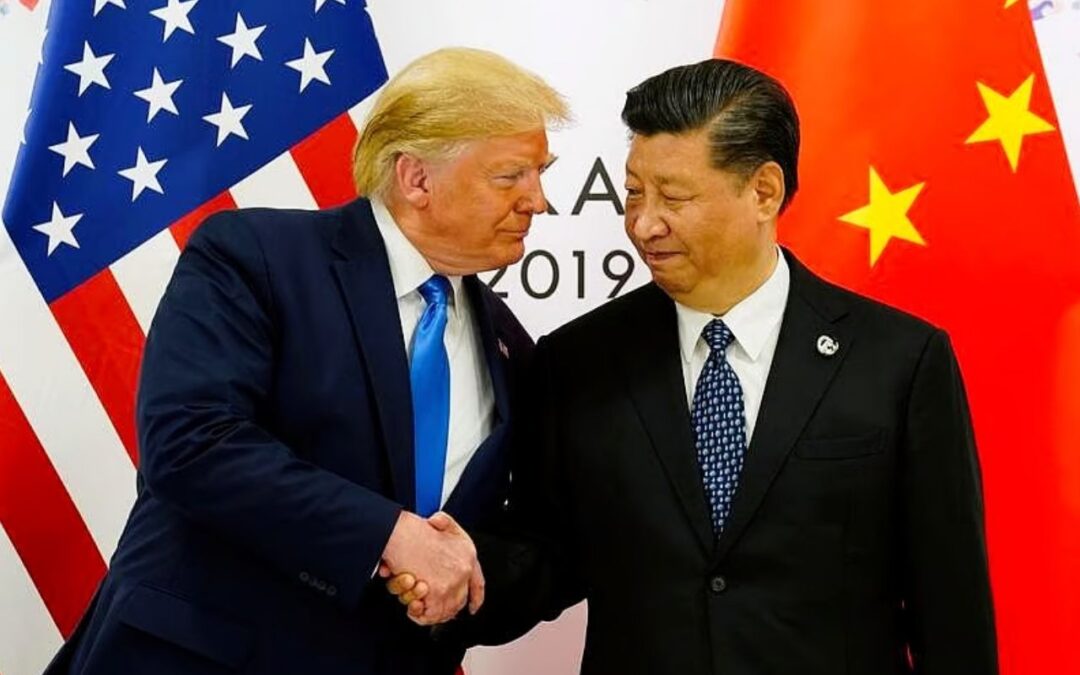President Donald Trump is set to address the nation at 3 p.m. ET from the Oval Office on October 16, 2025, amid sharp escalations in the ongoing US-China trade war. The tension has surged notably after China imposed restrictions on exporting rare earth minerals on October 9, a critical move impacting many American industries.
In retaliation, Trump announced a 100% tariff on Chinese imports, effective November 1, raising concerns globally and rattling markets. The address is expected to formalize or intensify these trade measures as investors brace for repercussions across sectors and economies.
Immediate Market Fallout
Markets reacted strongly following Trump’s tariff announcement. The Dow Jones Industrial Average plunged 878 points, while the Nasdaq and S&P 500 experienced significant declines of up to 3%. Tech-heavy stocks like Nvidia, AMD, and Apple were among the hardest hit due to their reliance on Chinese supply chains.
Asian markets also showed signs of distress, with Hong Kong’s Hang Seng Index dropping 2.4%. Analysts expect further market losses when trading opens Thursday, potentially deeper than after-hours declines, especially in technology and manufacturing stocks that depend heavily on rare earth minerals and components from China.
Impact on American Industries
The trade tensions are causing particular strain in industries reliant on China’s rare earth materials, essential for manufacturing magnets, batteries, and electronics. Companies like Boeing and Caterpillar could face losses between 4-7% as supply disruptions worsen.
Agriculture is also feeling the heat; U.S. farmers are losing ground as China shifts soybean purchases to Brazil, with corn and pork futures down 2-3%. Retailers such as Walmart and Target may increase prices by 10-20% due to doubled tariffs on $194 billion worth of Chinese goods. This cost increase could reduce consumer spending sharply, weighing on retail sector performance and overall economic growth.
Broader Economic Consequences
Beyond immediate sector impacts, this trade dispute risks deepening a cycle of retaliation reminiscent of past escalations. Experts warn it could reduce U.S. GDP growth by up to 1% in 2026 due to slower output, supply chain breakdowns, and inflationary pressures.
The imposed tariffs act as a regressive tax on American households, estimated to cost around $1,200 annually. This inflation pressure could push core consumer prices up by 0.4-0.6% in the last quarter of 2025, complicating Federal Reserve decisions on interest rates. Currency markets are also turbulent, with the dollar strengthening against the yuan, which could help exporters but hurt multinational profits.
In foreign exchange, the pound dollar rate has hovered around 1.342 US Doller per British Pounds recently, reflecting global economic uncertainties alongside trade tensions.
Uncertain Negotiations
Trump’s scheduled address comes at a critical moment ahead of the upcoming Asia-Pacific Economic Cooperation (APEC) summit, initially set to host the president and Chinese leader Xi Jinping.
There is speculation that the meeting could be canceled or postponed due to heightened tensions. Treasury Secretary Scott Bessent has suggested a possible extension of the earlier tariff pause if China halts export restrictions, but Trump remains firm on his tariff stance. The ongoing dispute shows a volatile outlook where swift resolution appears unlikely, leaving investors cautious and businesses bracing for prolonged uncertainty.
This trade war escalation deeply affects everyday Americans and global markets alike. While some domestic industries might gain modestly, the overall impact is a heavier cost burden on consumers and companies reliant on China. Watching how Trump charts the next steps in his address will be crucial for understanding the trajectory of U.S.-China economic relations. Defensive investments like gold and utilities may become safer bets as volatility rises, and the broader economy faces headwinds from this escalating confrontation.
Written By Fazal Ul Vahab C H


